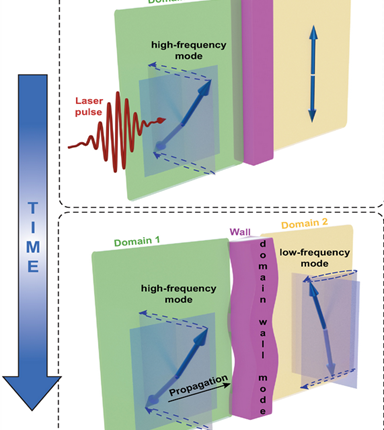
Magnetic waves and efficient data storage
Published in the journal Physical Review Letters, an international research team led by Konstanz physicist Dr. Davide Bossini, found that magnetic phenomena in antiferromagnets that can be induced by ultrafast (femtosecond) laser pulses with the potential to give the materials with new functionalities for energy-efficient and ultrafast data storage applications.
There is an insatiable demand for both data storage and ever-faster data processing. Current solutions, according to Bossini, are not keeping up. Expectations are that after 10 years, this demand will no longer be met. It’s not a matter of more data centers. The need is for faster and more energy-efficient solutions than magnetic hard disks provide. According to the research, antiferromagnets, is a promising candidate.
Antiferromagnets have atoms with alternating magnetic moments that cancel each other out. Given that they have no net magnetization there is no magnetic impact on the surrounding environment.
Internally, these antiferromagnetic bodies abundantly found in nature are split into many smaller areas or domains, where opposing oriented magnetic moments are aligned in different directions. Transitional areas known as “domain walls” separate these domains.
The international team of researchers showed that domain walls play an active role in the dynamic properties of the antiferromagnetic nickel oxide. The experiments revealed that magnetic waves with different frequencies could be induced, amplified and even coupled with each other across different domains – in the presence of domain walls. Coupling different magnetic waves across domain walls shows the potential to actively control the propagation of magnetic waves in time and space as well as energy transfer among individual waves at the femtosecond scale– a pre-requisite for using these materials for the ultrafast storage and processing of data.
This data storage would be several orders of magnitude faster and more energy-efficient than current ones. It would also be able to store and process a larger amount of data. For more information visit the Original publication.
Original Release: Eureka Alert
